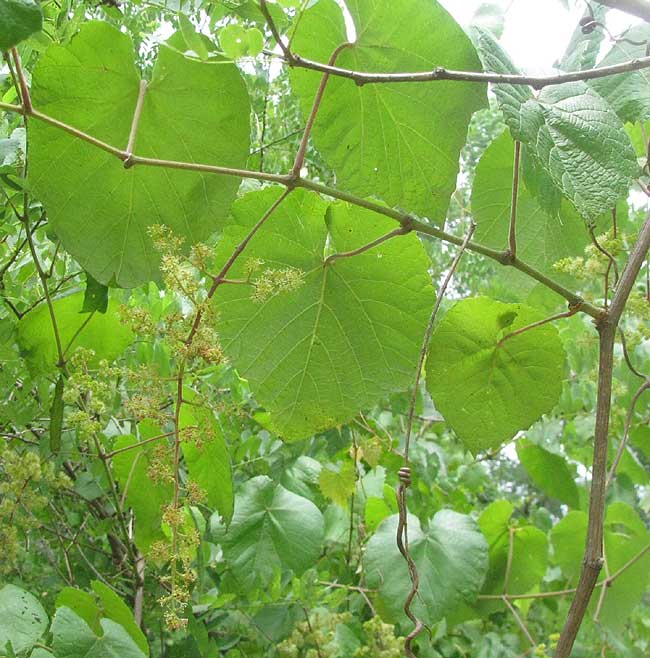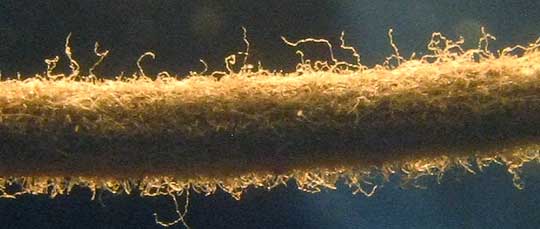Excerpts from Jim Conrad's
Naturalist Newsletter

from the June 3, 2012 Newsletter issued from the woods of the Loess Hill Region a few miles east of Natchez, Mississippi, USA
WINTER GRAPE FLOWERING
Handsomely clambering over streamside trees in the bottomlands here is the big-leafed grapevine with large, dangling panicles of greenish-yellow flowers shown above. On the leaf at center, top, notice the shallow lobe or "ear" along each margin. A close-up of some flowers is shown below:

In that picture notice that green flower buds mingle with flowers in which the pollen-producing stamens are very evident but no petals are visible. In grape flowers, genus Vitis, the corolla's five petals, instead of opening wide as in most flowers, remain stuck together forming a "cap" over the immature sexual parts inside them. Once the sexual parts are ready for pollination the "cap" of five adhering petals falls off as a unit, the stamens quickly unfurl, and the flower is ready for business.
Besides its large, soft leaves with those shallow lobes on the margins, another noteworthy feature of this grapevine species is its general hairiness. Look at the soft, spreading hairs on a leaf petiole below:

The most commonly-used English name for this species is Winter Grape, though sometimes it's called Graybark and Gray-leaf Grape, Nut Muscadine, as well as other names. It's VITIS CINEREA, mostly a southeastern US species but found as far north as Pennsylvania and Nebraska, and extending into northeastern Mexico.
I read that a yellow dye can be obtained from its fresh or dried leaves. Traditionally the smallish, sweet-tart grapes were eaten raw or dried for winter use. As with other large- and soft-leafed grapes, the leaves can be wrapped around other foods as they are baked, with the leaves imparting a pleasant flavor to the foods. Sap can be drunk from the severed stems, though that's being pretty hard on the vine just for a drink. The tendrils of this species are edible either raw or cooked, though there's not much substance to them. They taste a little acid, like Sorrel, though not that strong. They're not bitter like many young grapevine tendrils.